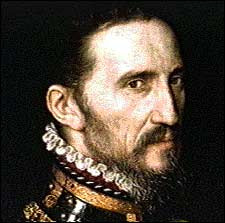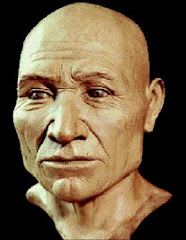Road to Revolution - Period 3 on Dipity.
Wednesday, May 27, 2009
Tuesday, May 19, 2009
Bloody Butchery - Runaway Fight of the Regulars!

You have a couple of days to read this primary source called a Broadside. Here is a little background info: Broadsides are single-sheet printed documents. They were frequently displayed or posted in public areas such as in taverns, outside meeting houses, or around municipal buildings. A variety of materials were printed on broadsides including poems, government proclamations, songs, and advertisements. Frequently they contained graphic images and a variety of typefaces and symbols. Although often printed on large pieces of paper, they could be of any size. A broadside may be compared to a poster or a handbill advertisement of today.
The American account of the events at Lexington and Concord is recounted in this dramatic broadside. Note the heavy black borders and the coffins that adorn the top of the broadside. Both the graphics and the inflammatory prose are designed to instill sorry and outrage in the reader and to inspire sympathy with the American cause of the rebellion.
This broadside depicts the British troops as attacking the Americans or "provincials" with a "savage barbarity" that included "shooting down the unarmed, aged, and infirm, they disregarded the cries of the wounded, killing them without mercy, and mangling their bodies." This broadside also exonerates the Americans, claiming that "not one instance of cruelty that we have heard of was committed by our victorious militia." Rather the Americans, "listening to the merciful dictates of the Christian religion. They breathed a higher sentiment of humanity."
This broadside was printed in Salem, Massachusetts by E. Russell. Russell was a Boston printer who moved to Salem in 1774 and published the Salem Gazette.
Once again, it will take some time to read but it is a good read. Go to the link at the top right and read what the broadside said. Here are some questions to answer for Thursday:
1. Who is identified as firing first at Lexington? Describe the situation....
2. Throughout this Broadside - The British (Regulars) are accused of doing terrible things..? Come up with a list of these accusations...
3. What is different about Prince Easterbrooks in comparison with all other colonists killed and wounded on April 19th?
4. What age is the youngest person to die on this first day of the war? Who is it?
5. What graphic image is printed on the Broadside? Do you think it had an effect?
Monday, May 18, 2009
Thomas Paine's Common Sense

For homework (due Tuesday) read the excerpts from Thomas Paine's famous political pamphlet titled Common Sense. All you have to do is put them into plain words, words we would use today. I just want you to get a sense of what he was saying. Because what he says fires people up to go ahead and actually declare independence from the British Empire! If you have any questions just leave me a comment. (NO, don't do the play/sketch thing - I crossed it out.
Wednesday, May 13, 2009
The Unfortunate Demise of young Christopher Snider
Following the series of Acts by Parliament, including the Townshend Acts, the protest movement in the colonies was growing strong. The Boycott of British goods was working. But not everyone agreed with the boycott. There were plenty of people loyal to the Crown. They came to be called Loyalists. Some of these people owned shops that were reportedly still selling British goods.
In Boston, it was common for young boys and teenaged boys to stand outside a business that was supposedly selling British goods. The boys hurled insults, animal dung, and threats at anyone that was intending to enter the business. Of course, this was bad for business as it scared most customers away. Overseeing the boys (and organizing them) were usually members of the Sons of Liberty. These men stood nearby watching the boys and giving approval.
On February 22nd, 1770, a group of schoolboys and members of the Sons of Libery gathered outside the shop of Theophilus Lillie. A sign also went up stating that the Lillie store was violating the boycott. A friend of Lillie's, Ebenezer Richardson, took down the sign thus incurring the wrath of the schoolboys and the men gathered nearby. Richardson fled to his home followed by a growing, hostile crowd. Threats were exchanged including Richardson saying, "By the eternal God, I will make it too hot for you before night." Richardson was threating to shoot. A sailor witnessed the crowd throwing rocks at the Richardson home and went to his aid. The rocks were breaking up the front porch, door, windows, and had hit Richardson's wife and children. The two went to find guns. When they returned, they stood at what was left of the front window but now there were boys in the backyard and to their front. So Richardson and the sailor were be attacked from the rear as well. Richardson knelt down, placed his gun on the windowsill, yelled another threat, and fired. Pellets from his gun hit one of the men, a young man's hand, and ripped open the chest and abdomen of young Christopher Snider (also spelled Seider)who was bending over to grab another rock. He died that very evening. The radicals in Boston made a big deal about the event and a huge funeral was organized and young Christoper was buried in the old Granary Burial ground - the first victim of violence during the troubles leading to the American Revolution.
WRITE A COMMENT - Okay, after reading this account, who is to blame for Christopher's death? What is your thoughts about what happened on that date Feb. 22nd, 1770. Once again, who is to blame for this?
Comment needs to be at least 2 sentences. Let's talk about your point of view tomorrow!
In Boston, it was common for young boys and teenaged boys to stand outside a business that was supposedly selling British goods. The boys hurled insults, animal dung, and threats at anyone that was intending to enter the business. Of course, this was bad for business as it scared most customers away. Overseeing the boys (and organizing them) were usually members of the Sons of Liberty. These men stood nearby watching the boys and giving approval.
On February 22nd, 1770, a group of schoolboys and members of the Sons of Libery gathered outside the shop of Theophilus Lillie. A sign also went up stating that the Lillie store was violating the boycott. A friend of Lillie's, Ebenezer Richardson, took down the sign thus incurring the wrath of the schoolboys and the men gathered nearby. Richardson fled to his home followed by a growing, hostile crowd. Threats were exchanged including Richardson saying, "By the eternal God, I will make it too hot for you before night." Richardson was threating to shoot. A sailor witnessed the crowd throwing rocks at the Richardson home and went to his aid. The rocks were breaking up the front porch, door, windows, and had hit Richardson's wife and children. The two went to find guns. When they returned, they stood at what was left of the front window but now there were boys in the backyard and to their front. So Richardson and the sailor were be attacked from the rear as well. Richardson knelt down, placed his gun on the windowsill, yelled another threat, and fired. Pellets from his gun hit one of the men, a young man's hand, and ripped open the chest and abdomen of young Christopher Snider (also spelled Seider)who was bending over to grab another rock. He died that very evening. The radicals in Boston made a big deal about the event and a huge funeral was organized and young Christoper was buried in the old Granary Burial ground - the first victim of violence during the troubles leading to the American Revolution.
WRITE A COMMENT - Okay, after reading this account, who is to blame for Christopher's death? What is your thoughts about what happened on that date Feb. 22nd, 1770. Once again, who is to blame for this?
Comment needs to be at least 2 sentences. Let's talk about your point of view tomorrow!
Sunday, May 10, 2009
Why Was There An American Revolution?
Using the link to the right (right column) please read the following sections and see if you can answer the revolutionary questions. Copy these onto a word document and let's discuss tomorrow. Give it the title - Why Was There An American Revolution?
Introduction:
*Why do Historians say the American Revolution was the first "modern revolution"?
*How did the revolution touch off an "Age of Revolution"? cite examples
*Take a moment and explain the three fundamentals that the Americans were fighting for.
Why should we care about the American Revolution?
*Until Mel Gibson's Patriot (2000) Why have movies pertaining to the American Revolution struggled in the past?
What four issues of enduring interest are raised in this war?
Why did the American Revolution take place?
Over the course of time, the American colonies began to have a different look and feel about them compared to the home country of Britain. There were common characteristics shared by the colonies that separated them from Britain. In your own words list and share an explanation of what these were.
See you Tuesday - we will see how well you did.
Introduction:
*Why do Historians say the American Revolution was the first "modern revolution"?
*How did the revolution touch off an "Age of Revolution"? cite examples
*Take a moment and explain the three fundamentals that the Americans were fighting for.
Why should we care about the American Revolution?
*Until Mel Gibson's Patriot (2000) Why have movies pertaining to the American Revolution struggled in the past?
What four issues of enduring interest are raised in this war?
Why did the American Revolution take place?
Over the course of time, the American colonies began to have a different look and feel about them compared to the home country of Britain. There were common characteristics shared by the colonies that separated them from Britain. In your own words list and share an explanation of what these were.
See you Tuesday - we will see how well you did.
Thursday, May 7, 2009
The STop Disasters Simulation for May 7th!
The link is over to the right! Leave a comment for me and tell me how you did and what you thought of the sim. See you Friday!
Monday, May 4, 2009
Washington's Letter to his Mother...

George Washington was there at Braddock's Defeat early in the French and Indian War. What does he say to his mother after the engagement? (The questions will be below by 7th period today).
Bring your responses to these questions to class tomorrow for discussion! C YA
Please - complete sentences...
1. How does Washington describe the King's troops once the fighting began? In your answer include two specific examples...
2. What does Washington have to say about his own Virginia militiamen?
3. The course of American history could have changed dramatically during this battle - why? Get my drift? include your supporting info
4. Honor thy Father and Mother - Does Washington? How do we know?
Subscribe to:
Posts (Atom)








